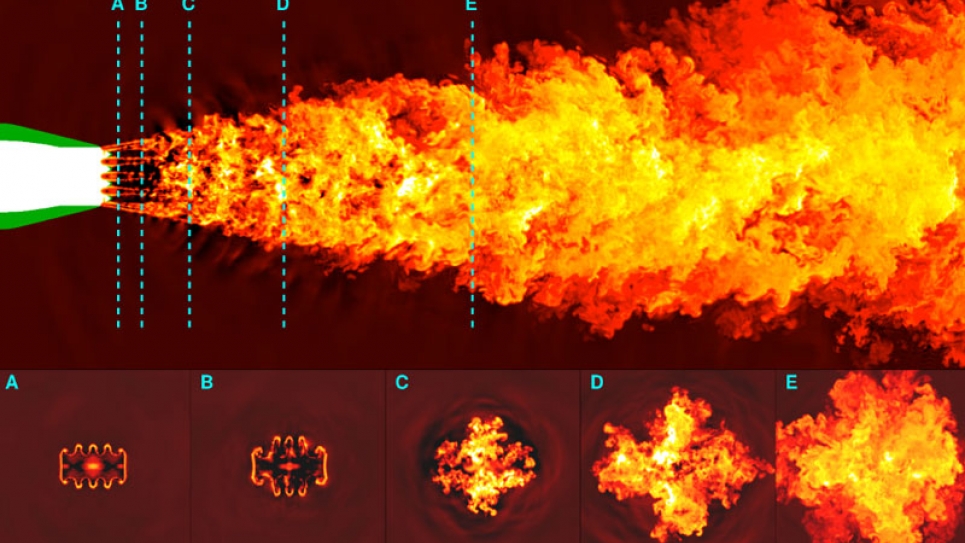
Prediction of Supersonic Jet Noise Using Large Eddy Simulation
Noise grounds next-gen, high-speed commercial aircraft deployment
Noise generated by engine exhaust jets is one of the greatest barriers to the deployment of high-speed commercial aircraft. Very high jet velocities, typical of supersonic aircraft, heighten noise pollution levels in airport communities and accelerate hearing loss for crew on aircraft carrier decks.
Reducing jet engine noise
Modifying the nozzle geometry by adding chevrons (serrated geometric edges) to the nozzle lip is experimentally known to reduce jet noise, but the physical reasons for this are not well understood. Small-scale turbulence and shocks generated by chevrons strongly influence the development of the large turbulent eddies far downstream that control the production of noise. To capture these effects, compressible large-eddy simulation using unstructured grids, which minimizes numerical dissipation and dispersion, is needed. For this purpose, the CharLES computational infrastructure, developed at the Center for Turbulence Research, is being used for these massively parallel simulations at the Argonne Leadership Computing Facility.
New simulations aim to tell the full story
Using the resources of the Argonne Leadership Computing Facility, researchers will work to fully resolve the effects of chevrons and heating on the noise produced in supersonic turbulent flow from a rectangular nozzle. These simulations are expected to reveal new insight into how enhanced shear-layer mixing due to chevrons sustains itself and to address the question of the optimal chevron penetration angle from a jet-noise standpoint. This research may further efforts in noise-mitigation strategies that are critical to the design and viability of next-generation supersonic aircrafts.